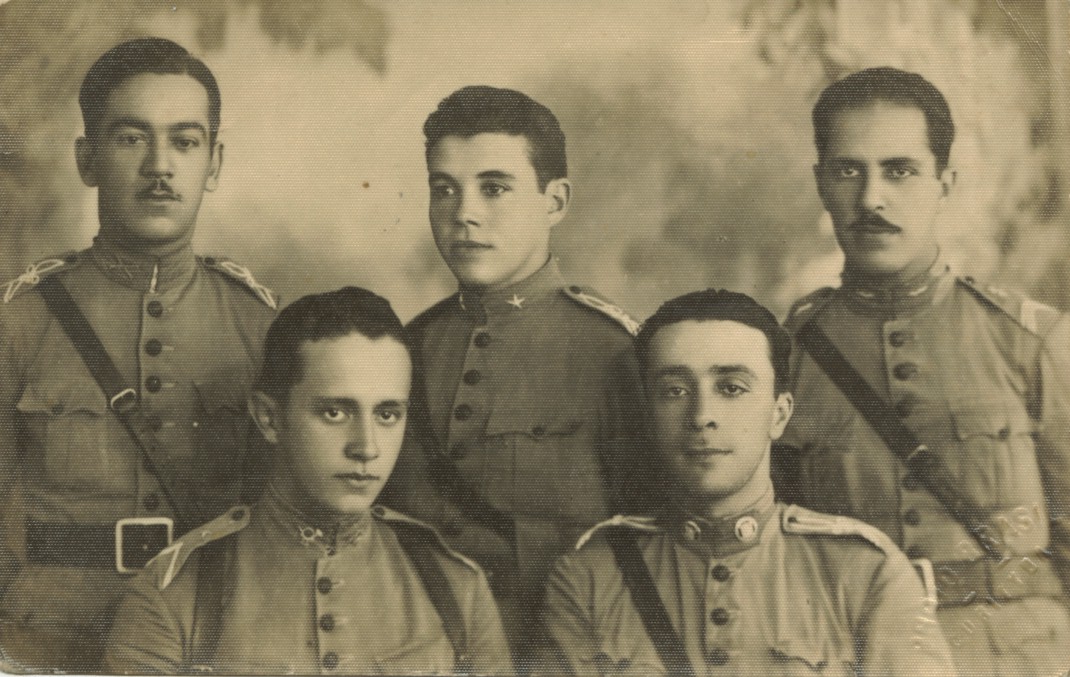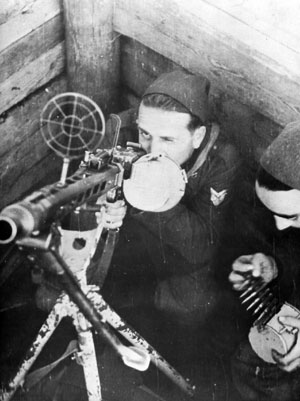






Rising Sun* has commented elsewhere on this forum that the Brazilian contribution to the Allied cause in World War 2 is one of the most overlooked.
In particular, note should be made of the Italian Campaign, wherein the Brazilian Forces put in a sterling effort which has gone largely unrecorded and unrecognised in the decades since.
This is a saddening thing, in as much as: that for a nation at the stage of development Brazil then was, to join the wider Allied community and send it’s young men off to fight in WW2 was a huge demographic risk, and a gamble that should have (though in the event did not) earned Brazil much credit within the community of older nations.
No-wonder then, that in the years since Brazil has pretty much kept to itself, having gone un-thanked and un-recognised for the efforts it made in the mid-1940’s.
Kind and Respectful Regards, Uyraell.
I am interested in the Brazilian Forces in WW2. What equipment did they use?
And how high were the losses for the Brazilians.
I read just that they fought bravely and were also very well respected by the Germans. So I think similar like Uyraell on this one, that they are overlooked with no good reason.
And what I know, much of the equipment was from the US, but I do not know if there were indigenous designs used as well.
Greets
Elk
Brasilians had American equipment. They sent a Corp of about 25000 men in Italy, about mid of them in first line duties, on turns. Brazilian Corp entered in combat in september '44 in the Serchio Valley, between Toscana and Liguria, on the Gothic line. To his flank there were the 92nd american division Buffalo; fronted it the 148th infantry division of general Freter Pico and the Italia division of RSI of General Mario Carloni (a veteran of Russian front and a great commander). Brasilians had about 500 KIA, MIA, POW and about 2800 wounded.
To be exact, Carloni was the commander of Monterosa Alpina division, who was first joined by Bersaglieri Italia division and later partially replaced by this last unit (because some alpini of monterosa were needed on Alpi Occidentali front), at the end of 1944. However the commander in chief of Italian troops remained General Carloni, estimated and experienced officer.
Barzilians and Americans hoped that Italian troops lacked of resitance willing, doing some propaganda for disertion. In november a Brazilian offensive against Monterosa (Monterosa supported by some units of San Marco Division e by the troops of 148 German division) was stopped. In december there was an Axis counteroffensive that obtained good success, disarticulating the 92 american division, who had to retreat rapidly for about 8-10 Kms deep and 20 Kms long. 8th Indian division was immediately called to reestablish the line. This was the operation Temporale d’inverno or Wintergewitter. 250 American prisoners were captured by Italo-German forces. General Graziani and Mussolini wanted to continue the attack with new forces, but German command refused for many reasons, first of all the lack of reserve units and the complete air superiority of the Allies. However this counterattack delayed for some months the Allies projects to break the Gothic Line south of Bologna.
A new American attack in january against Italian positions was stopped. Only the last offensive, started the 4th of april 1945, at least brook the lines after 2 weeks of fighting. The 232 German division on the left, and the 148 on the right of italian troops were forced to were to withdraw, leaving Italians isolated and exposed to the advancing U.S. troops from the left and right. Thanks to Carloni’s experience, matured in similar situations in Russia, he began to skilfully manoeuvre his division out of direct confrontation with the American forces, avoiding contact.
However the war was ending and in spite of the success of avoiding a disaster, the general situation was desperate. Carloni met General Fretter-Pico on the evening of 27 April.
The 28, the two generals with their units surrendered to the Brazilian corp who was encircling them.



Were those the casualties of the one sole operation or altogether?
When you mentioned the propagande leaflets, how high was the desertion rate in the forces of the RSI?
Exactly in my information Brazilian Corp had 465 KIA, 35 POW, 16 MIA and 2722 WIA in all Italy campaign, of course.
The disertion rate in RSI forces was the same of others Armies, with a difference: it was an Army that was losing a world war with a civil war inside the world war. The desertion inside Monterosa division (desertion meaning a real desertion and unjustified absence too) were 1200 in an organic of about 20000 men: a rate of 5,6%. The San Marco division, on 23000 men had the effective desertion of 1010 men: a rate of 4,4%. All the RSI forces (about 600000 men) had a desertion rate of 2,5% for a total of about 15000. You’ve to consider two things: over 150000 of these 600k men were volounteers (that knew war was lost), and others fought for the freedom of their houses in eastern Italy (Venezia Giulia, Istria, Dalmazia, Zara ecc.) against the Slave nationalism of the Tito partisans. Between this kind of men desertion were nearby 0%. Between the conscripts the situation changed: some of them had southern origin, and their families were far and in Allies territory. The temptation of escaping the war and possibly reaching the families by surrending to Allies could be strong. Other men could be cought by partisan and antifascist ideas or simply by the idea that to prolong the fight would be useless: in a civil war, in a loosing side, these things could happen very easy.
However you have to know that 7532 Germans deserters escaped in Switzerland, and other 24000 deserted on the battlefield.
In the Allies side 1740 USAAF crews deserted in Switzerland and about 4500 men in 5th US army deserted; in the 8th British Army, 11358 men deserted since january 1944 still may 1945.
So nothing coul be charged over the RSI soldiers.
ELK, if you’re interested, try to understand a bit of Italian and read here  :
:
http://www.repubblicasocialeitaliana.eu/pagine/storia/rsi%20la%20guerra%20in%20italia/volume3%201945/pagine/071.htm
http://www.secondorisorgimento.it/rivista/saggi/disertorirsi.htm
Surely didn’t mean to say that RSI soldiers were generally deserting or so, I was just interested in the numbers 
And also thanks for the numbers on the German, US and British soldiers, quite interesting.
This may give a little more insight into the Brazilian Forces during WW2
Good find leccy, thanks!